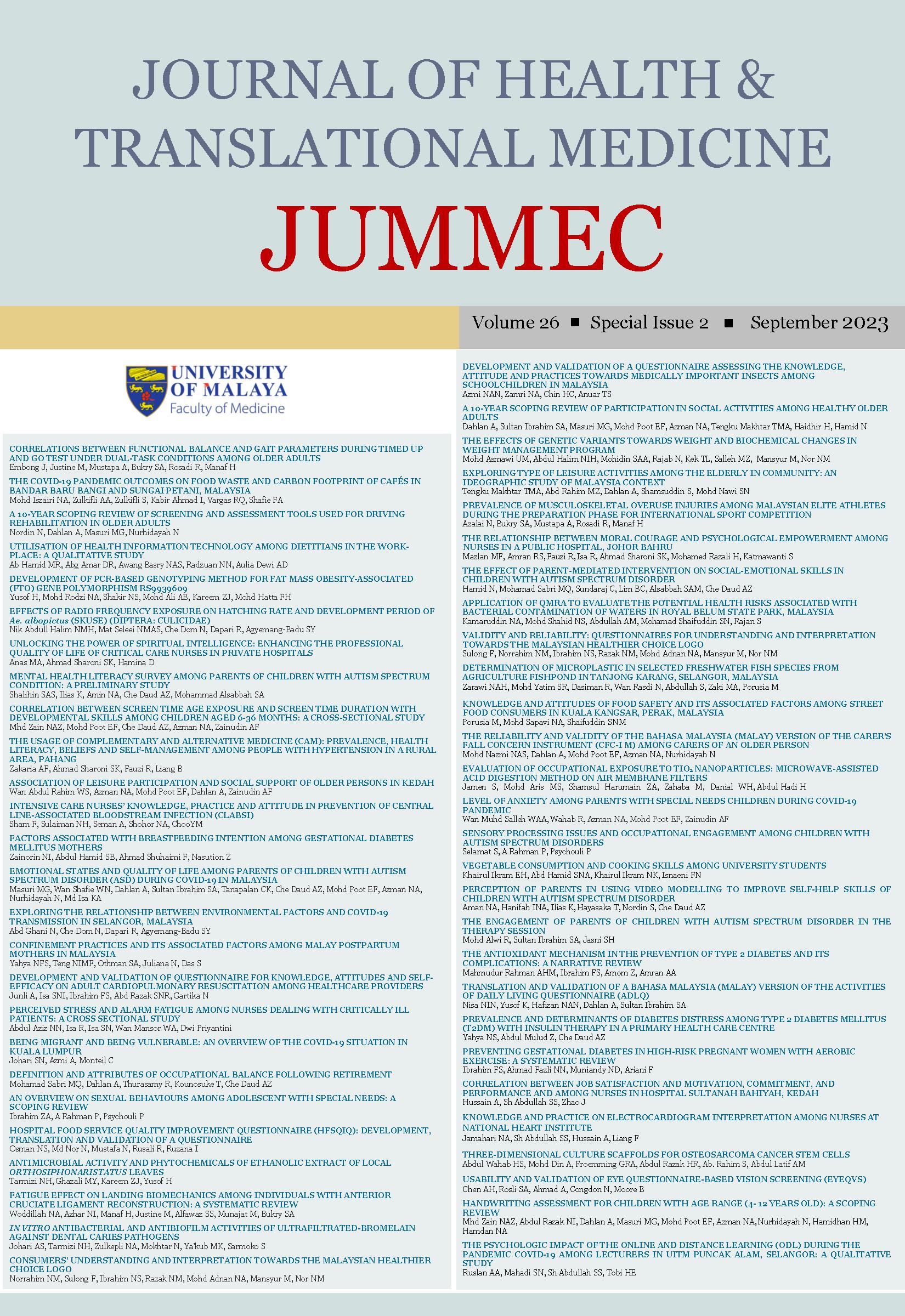THREE-DIMENSIONAL CULTURE SCAFFOLDS FOR OSTEOSARCOMA CANCER STEM CELLS
Received 2023-07-13; Accepted 2023-09-26; Published 2023-09-26
DOI:
https://doi.org/10.22452/jummec.sp2023no2.51Keywords:
3D Culture, Osteosarcoma CSCs, Scaffold, StemnessAbstract
Cancer stem cells (CSCs) are a subpopulation of tumour cells that are highly tumorigenic with self-renewing potential. In osteosarcoma, these cells are responsible for drug resistance and cancer relapse. Studying CSCs in vitro can provide a better development of therapeutic strategies by understanding the mechanism of tumorigenesis and chemoresistance in osteosarcoma. Cell culture plays a crucial role in cancer research, stem cell studies, and drug discovery. While two-dimensional (2D) methods are commonly used for cell culturing, recent advancements in three-dimensional (3D) techniques offer promising opportunities for conducting complex experiments. With 3D cell culture, the cellular environment can be manipulated to closely mimic in vivo conditions, resulting in more
accurate data about cell-to-cell interactions and tumour characteristics. Various scaffold-based techniques using (1) natural polymers such as hydrogel, collagen type I, agar gel, Matrigel, alginate, bacterial cellulose, hyaluronic acid, and (2) synthetic polymers such as polyethylene glycol diacrylate (PEGDA) and poly (2-hydroxyethyl methacrylate) (pHEMA) offer unique advantages and applications for studying osteosarcoma CSCs. Scaffold-free techniques such as ultra-low binding plates and hanging drop are also used to culture osteosarcoma CSCs. This review article describes
various 3D culture methods used in forming osteosarcoma CSC spheroids and the expression of stemness markers.
Downloads
Downloads
Published
Issue
Section
License
All authors agree that the article, if editorially accepted for publication, shall be licensed under the Creative Commons Attribution License 4.0 to allow others to freely access, copy and use research provided the author is correctly attributed, unless otherwise stated. All articles are available online without charge or other barriers to access. However, anyone wishing to reproduce large quantities of an article (250+) should inform the publisher. Any opinion expressed in the articles are those of the authors and do not reflect that of the University of Malaya, 50603 Kuala Lumpur, Malaysia.


